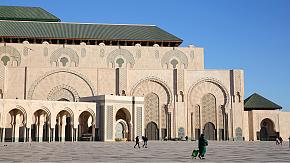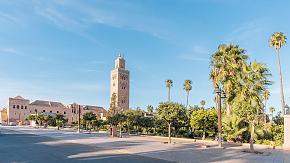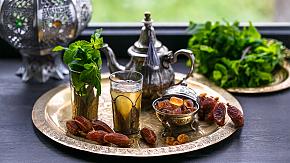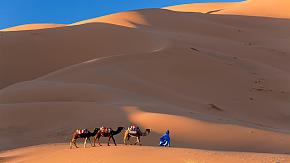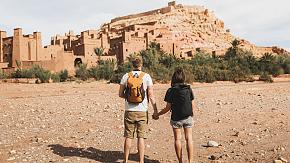Fez Travel Guide: Explore The City's New & Old
Morocco boasts four imperial cities, all of which have at various times in history been capitals of this magical country: Fez, Marrakesh, Meknes and finally the current capital, Rabat. I wrote about Mystical Marrakesh last time I visited Morocco, but today I want to take you to the oldest of these cities, Fez (فاس), sometimes spelled Fes from its French name, Fès. This ancient city was founded in 789 AD and has been nicknamed both the "Mecca of the West" and the "Athens of Africa." Whatever you want to call it, I am here to tell you that it is a wonderful travel destination. But I guess I should tell you why!
In fact, Fez could be said to be three distinct cities melded into one. Fes el Bali (فاس البالي) is the oldest part of the city, founded by the Idrisid dynasty in 789; Fez Jdid (فاس الجديد) was added right next door by the Marinid dynasty in 1276; then there is the new Fez developed by the French during their colonial days. Today the new Fez is by far the largest, but most of our interest is going to be in the first two, collectively known as the Medina of Fez.
Fes El Bali
Let's start our visit to Fez by getting totally, hopelessly lost! Within the walls of Fes El Bali is a maze of over 9,000 narrow lanes, most of which have no names. Listed by UNESCO in 1981 as a World Heritage Site under the name Medina of Fez, this is believed to be the world's largest car-free urban area, not because of any environmental policy, but simply because the lanes and alleys are too narrow for cars. Many are even too narrow for bicycles, although you may meet the occasional donkey or mule. It is a wonderful place to wander at random not knowing what you will find round the next corner. Mosques, markets, tea shops, riads (traditional Moroccan houses with inner courtyards, some of which have been converted into hotels or restaurants), cafés, madrasas (Islamic schools) etc - the list goes on and on.
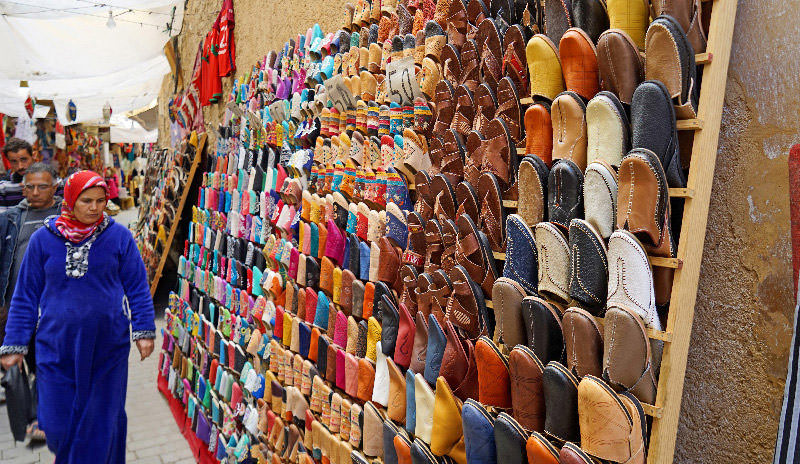 Medina of Fez
Medina of Fez
One place is easy to find. It is the most photographed sight in Fes El Bali, but you don't need your eyes to find it. Just follow your nose and you will reach one of the leather tanneries of Fez. The 11th century Chouara Tannery is the largest of the three main tanneries here and you can see the large stone vessels containing the various liquids used to cure the hides and the dyes used to color them. The hides of cattle, sheep, goats, and camels are first softened in a mix of cattle urine, pigeon feces, lime and water for days before being dyed in various colors then dried. The production process is entirely manual and has been unchanged for centuries. Visually stunning in the best way, but also the olfactory experience can be stunning in not the best way.
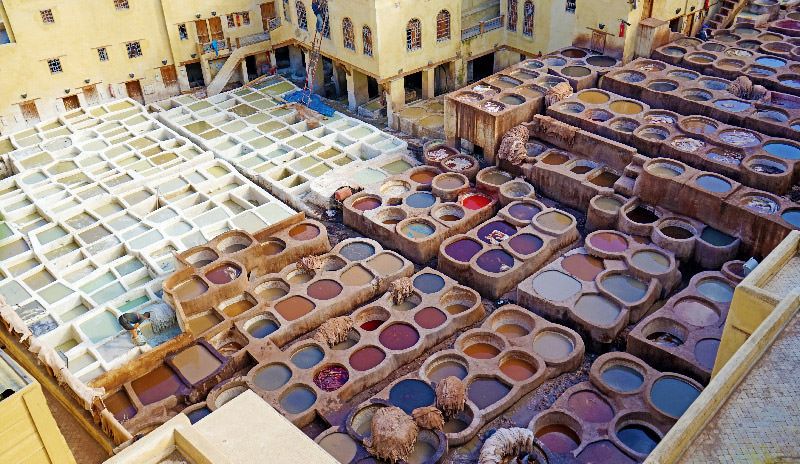 A tannery in Fez
A tannery in Fez
Fes El Bali is also home to what is recognized as the world's oldest university, The University of al-Qarawiyyin (جامعة القرويين) was established, initially as a mosque, in the year 859 AD. Today, the university mainly concentrates on Islamic religious and legal topics and caters for students of both sexes from 13 to 30 years old, awarding both high school graduation certificates and full university degrees. The mosque here is said to be the largest in Africa.
Nearby is the Zaouia of Moulay Idriss II, a zawiya or shrine containing the tomb of Idris II, ruler of Morocco from 807 to 828. He is regarded as the founder of Fez. UNESCO listed in its own right, this is one of the most sacred shrines in the country. Non-Muslims are not allowed inside the building, but it is possible to see its ornamental doors and walk around the outside with its decorated walls.
To the north-western end of Fes El Bali is Kasbah An-Nouar. This fortress, dating from the end of the 12th century is walled off from the rest of the Medina and can be entered only through one gate, Bab Chorfa. The attractively decorated gate with its two tall, eight-sided towers is an attraction in itself. Inside is another maze of houses and shops, very similar to the rest of the medina. There is a mosque with a prominent minaret, which can be seen from outside, making it a valuable reference point for direction finding. Outside Bab Chorfa is a large market selling everyday items, as it has been doing here for centuries.
The 17th century Funduq al-Najjariyyin (فندق النجارين) is a traditional Moroccan traveler's inn. Funduq Al-Najjariyyin means "Inn of the Carpenters". Through its monumental entrance decorated with flowers and geometrical designs, you enter a lobby and central courtyard, which is surrounded by a gallery on the three floors containing the rooms which the traveler would have stayed in. Today, the funduq is a private museum known as Le Musée Nejjarine des Arts et Métiers du Bois (Najjarine Museum of Wooden Arts and Crafts). Apart from the displays of wooden works of art, ancient doors and antique furniture, there are also old wood-working tools from the 17th century. But the building itself is also object of great interest. Don't miss the palatial, wooden ceilinged public bathrooms. There is a rooftop terrace where you can enjoy a refreshing mint tea while overlooking the old city.
All the markets in Fes El Bali are great for souvenir shopping as they are less dependent on the tourists than some other medinas in Morocco, such as that of Marrakesh, so the traders are more relaxed and less pushy. Bargaining however, is expected.
If you are staying in a riad hotel in the old city and want to explore on your own, make sure you have its name and try to remember the way to your hotel from the nearest of the many gates of the walled quarter. Oh! And make sure you get the gate's name in case you need to ask for directions. But don't be over-concerned about getting lost; it's part of the fun and no one has been recorded as being stuck there forever trying to find their way home! So far as I know!
Fez El Jdid
Fez Jdid is the newer part of the medina, but still over 700 years old. This is quieter than Fes El Bali but rich in architectural detail if you know where to look. Don't miss the ornamental gates, especially Bab Semmarine. Here you can find Dar al-Makhzen (دار المخزن) or The Royal Palace. Although not open to the public, the palace is worth a look especially at the beautiful, recently restored main gates. Also in Fes Jdid, is the Mellah or Jewish quarter, established in 1438 as the first Moroccan Jewish quarter and named after the nearby river. Later the name was applied to all Jewish quarters in Morocco and mellah ended up just meaning "Jewish quarter". Although many of the Jewish population have now relocated to the new city, there are still a number of important synagogues here, especially the 17th century Ibn Danan Synagogue, restored in 1999 and a still active Jewish cemetery.
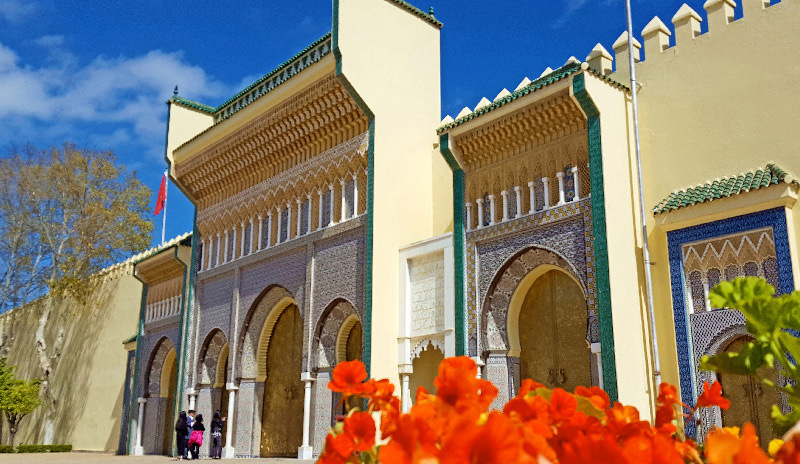 Fez Royal Palace
Fez Royal Palace
Fes Jdid is also a good place to do shopping for Moroccan spices or clothing and leather goods etc. After all this is where the locals come shopping. Shops and markets are centered on the Grande Rue de Fes El Jdid, the main street which runs north to south through Fes Jdid.
Should the bustle of the medina become overwhelming, head for Jnan Sbil, a peaceful garden and oasis of calm among the crowed alleys. The shaded paths and fountains will offer respite. You can also visit several bird coops where they breed doves and peacocks. The gardens become more busy around dusk, as the locals come to cool off after a hard day's work. That said, it's still pleasant then, too.
Of course if you are nervous about getting lost in either part of the medina, you can join various guided tours.
In the year 1250, Fes was taken by the Marinid dynasty and made their capital. (It was they who built Fes Jdid.) To the north of Fes El Bali is a hill, on top of which they buried their dead in monumental tombs. It is not known who was buried here and only a little remains to be seen. The Marinid Tombs site, though is a great place to get a panoramic view of the city and especially Fes El Bali. It is most popular at sunset.
Fez Food
By this time, you are probably getting rather hungry and the smells emanating from the many small restaurants or food carts in the medina will be getting to you. So what's on the menu? Whenever I think of Moroccan cuisine it's olives and its oil, preserved lemons, spices, couscous and tagines that first come to mind, but of course there's a lot more to it than that. While there are some odd things on offer such as stuffed camel spleen, most of the ingredients used are more recognizable. Beef, chicken, goat, mutton and lamb are the main meats. Salads and soups are popular as are sweet desserts that your dentist won't want to hear about!
Do try a tagine. This traditional dish is named after the earthenware pot it is cooked in. The dish is a long cooked stew, usually meat based with vegetables, spices and sometimes fruit. However, vegetarian versions can also be found. If you enjoy your tagines, remember to buy one of the special conical pots to take home - they make beautiful ornaments, too. I still have one I bought in Marrakesh thirty years ago. Other popular dishes include pastilla (بسطيلة), a kind of pie traditionally made with squab (young pigeons) in a pastry resembling the Greek phyllo, but here known as werqa, then finished with a topping of ground almonds, cinnamon, and sugar.Today chicken is often used instead of the squab, but the traditional version can be found quite easily. A common dish sold from food carts and restaurants alike, is snail soup. Snails are boiled in a broth containing up to 15 spices and served with toothpicks for you to extract the meat from the shells. One friend drank all the soup, declared it wonderful, but refused to eat the snails - more for me! The dish costs next to nothing. Harira is a great choice in the cooler months. This is a traditional spicy soup of lamb, lentils, tomatoes and eggs. It is especially popular during Ramadan, when it is used to break observers' fasts. Zaalouk is a cooked Moroccan salad similar to ratatouille, but with Moroccan spices - delicious. Food on sticks is popular, too! Brochettes are charcoal grilled spicy meat skewers served everywhere and accompanied by a local flat bread called khobz and harissa, the red chili pepper paste.
For those with a sweet tooth, briouat or briwat are triangular pastries made from werqa and often containing almond paste. These are fried, then dipped in honey flavored with orange blossom water and sprinkled with sugar. Savory versions are also available which use chicken or lamb mixed with lemon and pepper and sometimes, cheese as the filling and then flavored with herbs and spices.
Street food can be found everywhere, including Fez's new city outside the medina walls, but I suggest eating in Fes El Bali is the most atmospheric choice. Of course, I have only listed a few of the many dishes available. You sure to find something equally or more interesting. By the way, that stuffed camel spleen is better than it sounds! The spleen is stuffed with ground beef, lamb or camel meat, moistened with some fat from the camel's hump and flavored with olives and the inevitable spices. Soft, slightly gamey and delicious. Tempted?
There are also non-Moroccan choices available but more so in the new city. Most of the international fast food chains have arrived, too.
Fez can be visited on its own, or incorporated into a multi-destination trip taking in some of Morocco's other fascinating cities and towns. Tell us your preferences and choices or ask for our recommendations and we'll get back to you within 24 hours with a free custom-made itinerary for you to consider. We can arrange drivers and guides to get you around, show the best on offer and make sure you don't get lost, even in the alleys of old Fez.
Quick Question
What Our Clients Say
Explore the latest verified reviews of Odynovo's travel services on Tripadvisor, Google, Trustpilot, Product Review and more trusted platforms.

